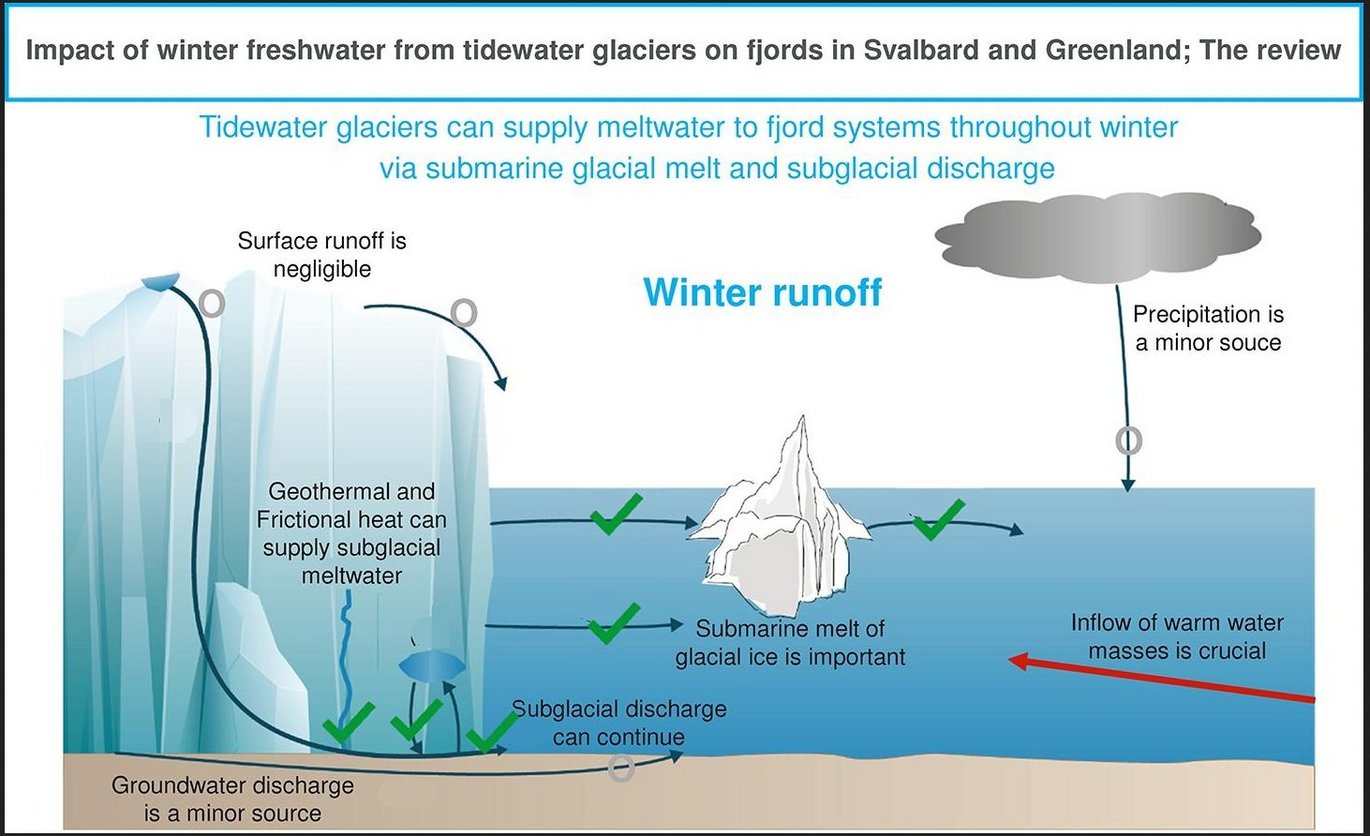Impact of winter freshwater from tidewater glaciers on fjords in Svalbard and Greenland: A review
New publication by Vonnahme TR, Nowak A, Hopwood MJ, Meire L, Søgaard DH, Krawczyk D et al.

Abstract:
This review paper is the first to collect and synthesise the available knowledge, across various disciplines, on the importance of wintertime freshwater inflow from tidewater glaciers into Arctic fjords. While surface melt is limited during winter, tidewater glaciers can continue to deliver freshwater into the marine environment. This can be delivered via subglacial discharge or produced by submarine melt. Subglacial freshwater can be generated all year round through geothermal and frictional heat and delayed release of subglacially-stored freshwater. Submarine melt in Arctic fjords is caused by the presence of warm water such as Atlantic Water and its derivative coastal water masses. The dynamics of the contributing water masses are subject to varying bathymetric barriers, seasonally shifting density fronts, and external forcing such as wind or internal waves. Their impact is variable across different fjord systems. When other terrestrial water influx is limited during winter, any glacier-derived freshwater inflow into the fjords can have pronounced physical and biogeochemical consequences, even at low fluxes. These can include the generation of upwelling, but also increased stratification. The extent of the freshwater influence depends on parameters such as discharge volume flux, water depth, and depth of the glacier termini, which might in turn affect ice algae and phytoplankton production during the early spring bloom. Coupling of winter freshwater discharge from tidewater glaciers with the physical and biogeochemical conditions of the fjord is therefore a dynamic multivariable process. Rapidly changing wintertime conditions in the Arctic may already be impacting the functioning of the Arctic fjord ecosystems and necessitate efforts to understand these processes better. This review highlights the importance of wintertime freshwater by summarising the current state of knowledge about its presence and magnitude, drivers governing its inputs, as well as its potential ecological impact on fjord ecosystems. Our study uncovers knowledge gaps and proposes research directions to better understand the changing Arctic environment.
